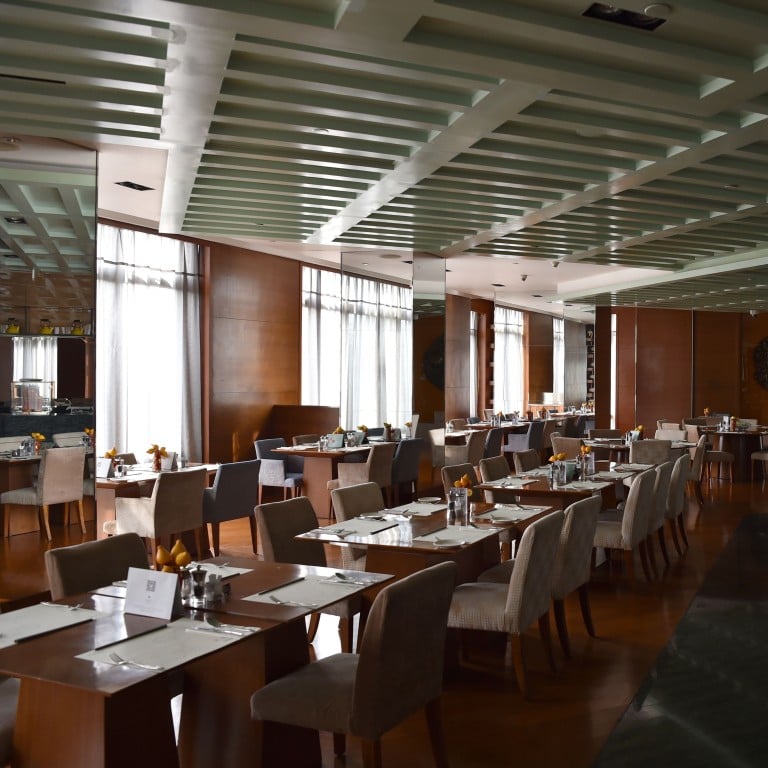
Eight in 10 Chinese hotel rooms sit empty as coronavirus keeps travellers at home, spoiling Lunar New Year holiday week
- Occupancy level was 22 per cent on January 24-26, versus 55 per cent on average during such festive weeks since 2015, STR says
- Health scare also means fewer visits by mainlanders to US in 2020, US$5.8 billion potential loss in spending, forecast shows
About eight in every 10 hotel rooms in China fell vacant during the Lunar New Year holiday after the deadly coronavirus outbreak triggered global travel alerts, flight restrictions and border controls.
The occupancy rate across mainland cities fell to 17 per cent on average on January 26, from 70 per cent on January 14, according to US-based data analytics firm STR, which tracks the global hospitality industry.
The occupancy level was 22 per cent during the January 24-26 period, versus 55 per cent on average during such festive weeks since 2015, it said in a statement. At a Yital hotel in Shanghai, the occupancy rate has reached a record low 10 per cent in the past week, a manager said.
The slump reflects the panic before the outbreak spread through all of China’s 31 administrative regions, prompting governments to impose border controls, while airlines cancelled flights to mainland cities. China had earlier announced a drastic lockdown of cities in central Hubei province where the virus originated, and paralysed transport hubs to stem the crisis.
Four in 10 Hong Kong hotel staff may lose jobs as coronavirus outbreak deters the few remaining brave visitors
“This is due to less business travel, school closings and many individuals who return home to spend the holiday with their families,” said Jesper Palmqvist, area director for Asia-Pacific at STR, a unit of Nasdaq-listed CoStar Group. Performance changes were even greater as news coverage of the coronavirus outbreak intensified, he added.
STR’s analysis was based on a sample of about 700,000 to 800,000 rooms it tracked during those days in January, from about 4,000 Chinese hotels in its database, he added.
The disease has claimed more than 630 lives and infected more than 31,000, mostly in mainland China. Carriers including Cathay Pacific and United Airlines have cut or stopped flights to China as demand has tanked.
“The virus has a devastating impact on our business because few tourists from other parts of the country travelled to Shanghai during this Lunar New Year holiday,” said He Xingmei, a sales manager at Yitel on Nanquan Road, Shanghai. “We are preparing for the worst. It seems the virus is unlikely to be contained in the very near term.”
Shangri-La Asia, which operated 42,400 rooms in 102 hotels under the group’s four brands at the end of 2018, said it was closely monitoring developments and “working closely with the local government to help contain the spread of the infection”.
“Like everyone else across many sectors, we are seeing a negative impact,” the hotel said. “However our most immediate concern now is to ensure we protect and safeguard the health and safety of our guests and colleagues.”
French hotel chain Accor Group is also monitoring the situation, it said. Guests travelling to or from mainland China, Hong Kong, Macau and Taiwan between January 23 and 29 were able to change or cancel a valid booking without penalties, it added. The waivers and refunds will also apply for cancellation of all events in China before March 31, it said.
Coronavirus: Hong Kong’s Cathay Pacific Airways to cut 90 per cent of mainland China services
At 17 per cent, the occupancy rate is similar to the trough Hong Kong’s hotel industry faced in May 2003, during the Sars (severe acute respiratory syndrome) epidemic, according to Hong Kong government statistics. That outbreak lasted about six months.
“It is important to consider the significant differences in the market over the past two decades,” Palmqvist said. Dependence on smartphone technology, the widespread use of social media and differences in hotel inventories are among factors that render such a comparison difficult, he added.
The latest health scare also means fewer mainland Chinese will make trips to the United States this year, according to Tourism Economics, a forecast partner of STR.
The firm forecasts there will be a 28 per cent drop in visits by mainlanders to the US, translating into a potential loss of 4.6 million hotel room nights sold and US$5.8 billion in visitor spending.
“Life was already challenging because of the [Hong Kong anti-government] protests. Since the outbreak of the coronavirus, performance has worsened – occupancy levels are very very low,” a senior executive at a property developer with hotels in China said. “Anyone in the F&B and leisure business in Hong Kong or China is going through a very difficult time, with hotels not being very profitable at all.
“Anybody in the Hong Kong hotels business is praying for a turnaround very quickly, otherwise you will see more of what Cathay announced – unpaid leave – broadening out,” he added.



